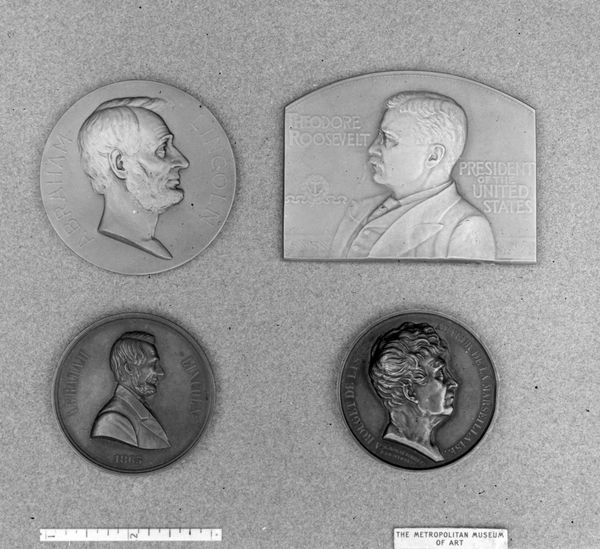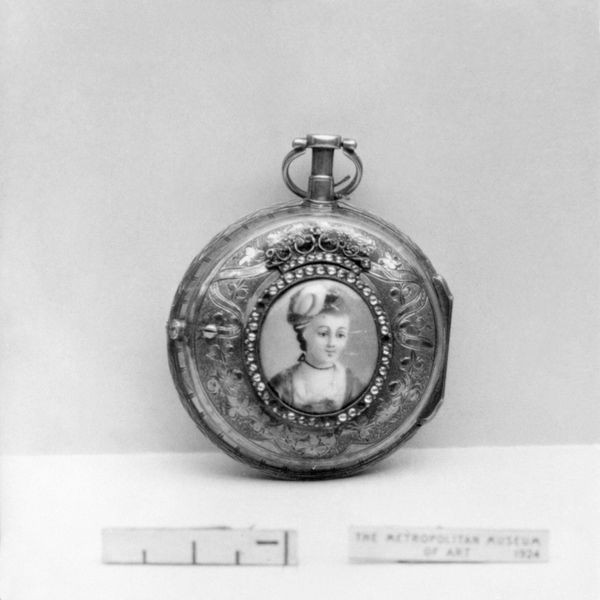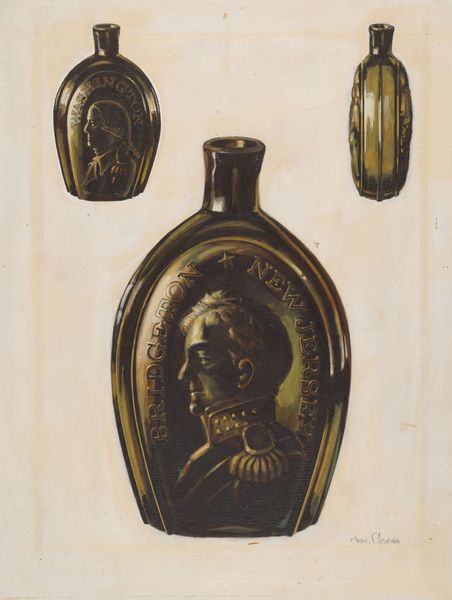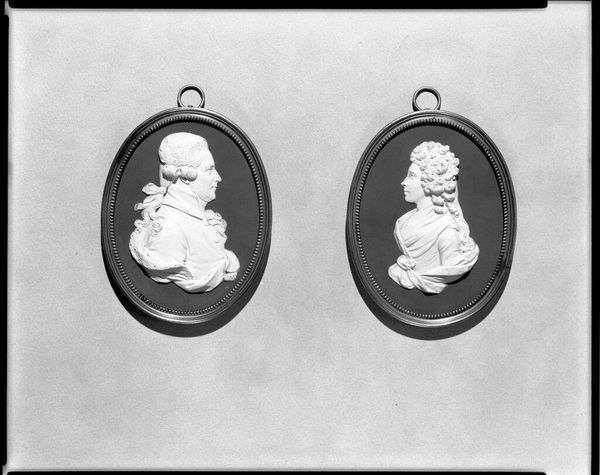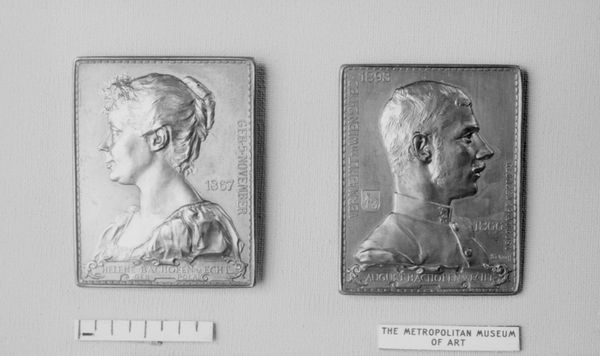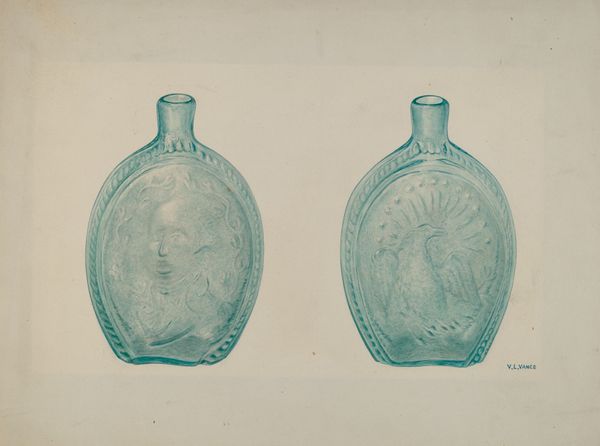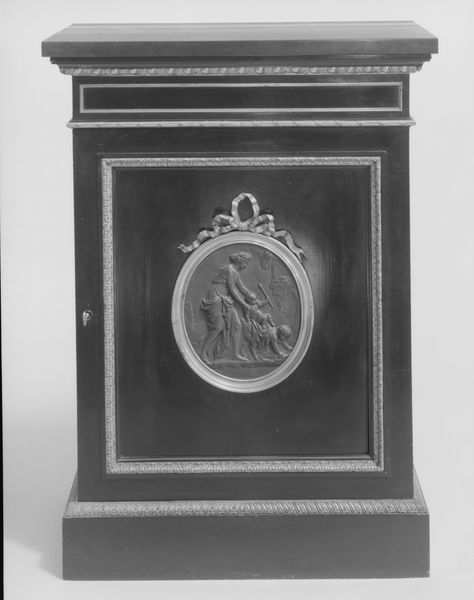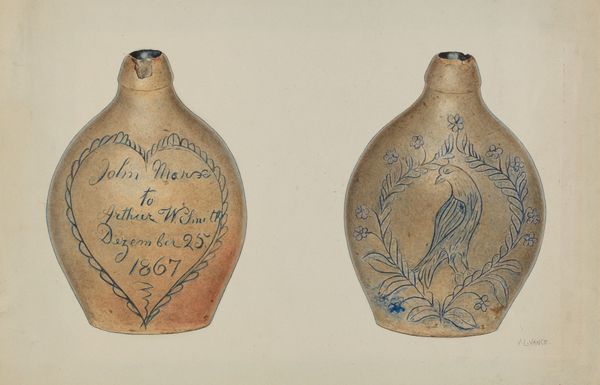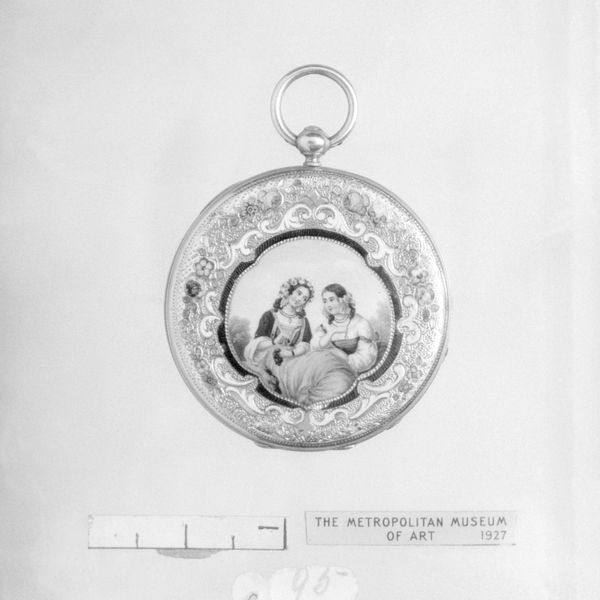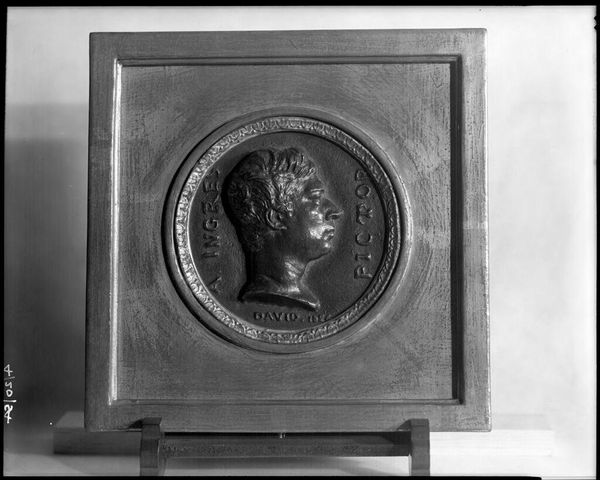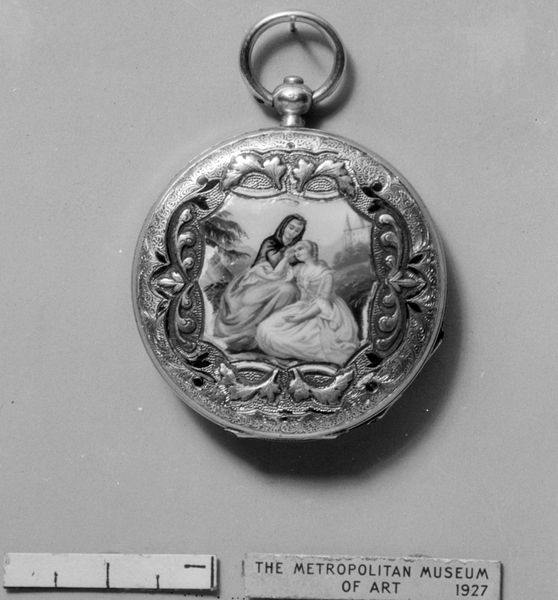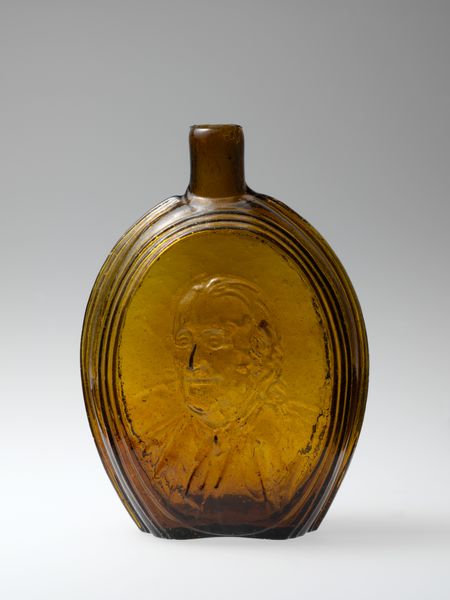
glass, sculpture
#
portrait
#
figuration
#
glass
#
sculpture
#
black and white
#
men
#
united-states
#
history-painting
#
academic-art
Dimensions: H. 6 7/8 in. (17.5 cm)
Copyright: Public Domain
Curator: This pair of flasks, created between 1844 and 1848 by Dyottville Glass Works, present more than mere utility. I sense a visual echo of a nascent American identity cast in fragile glass. Editor: There is a melancholic feeling here, particularly in the monochrome rendering. These aren't just containers; they are holding, even containing, historical weight. Who are the men featured on each flask? Curator: One presents William Henry Harrison, and the other, most probably, portrays George Washington. You see these portrait flasks offered both an appeal to patriotism, and I think, something akin to ancestor worship. Editor: So, we are engaging in early examples of commodity fetishism, embedding powerful historical figures into the most common, daily life objects? The accessibility makes their politics far reaching. How did this benefit glassmakers like Dyottville? Curator: Glassblowers and manufacturers took advantage of popular demand for likenesses of public figures to broaden their sales. It transformed those figures into symbols of consumption. But the symbols go beyond straightforward commercial value; it also alludes to American exceptionalism and the cult of leadership. Editor: Absolutely. And there's an undeniable tension—even a hypocrisy—between the revolutionary ideals these figures represent and the capitalistic system exploiting their images. Also, these were made not long before the Civil War. Do they reflect a specific attitude toward nationalism that excludes enslaved Black people and women? Curator: I find that angle especially compelling. They reveal how certain factions co-opted a narrative of nationhood while obscuring other lived realities. Editor: By recognizing art objects like this flask within a wider historical context, we get better at critically approaching symbolic meanings in other, non-art contexts, too. Curator: Right. They highlight the role of artifacts in cultural continuity and reveal that symbols have both the power to bind and the power to exclude. Editor: Indeed. And examining objects through an intersectional lens makes those cultural memories vivid and gives a powerful opportunity to discuss our contemporary culture too.
Comments
No comments
Be the first to comment and join the conversation on the ultimate creative platform.
